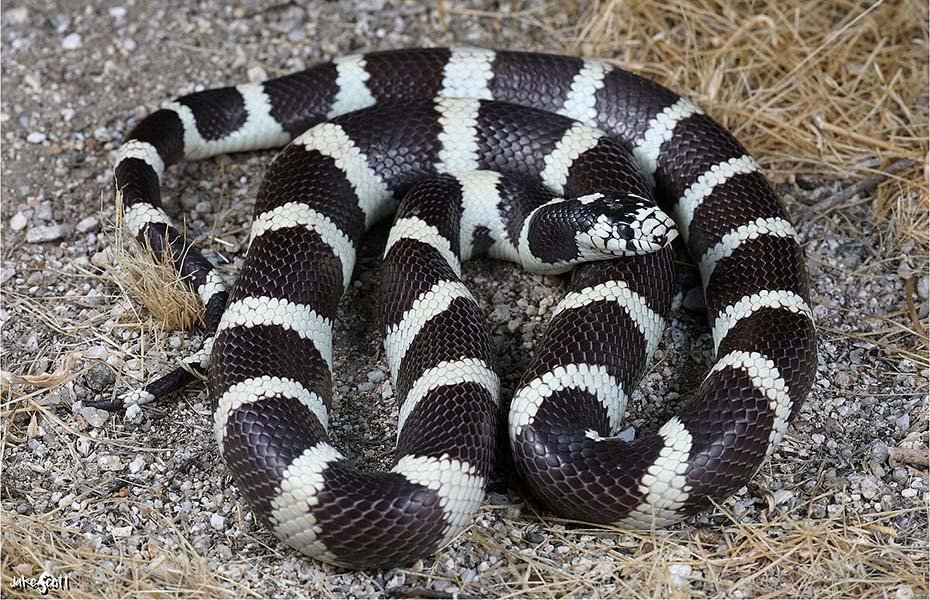
Image from: https://snakesatsunset.com/
California Kingsnake
Scientific name
Lampropeltis californiae
Lifespan
10–15 years
Size
3–4 feet
Diet
Small rodents, birds, lizards
Annual Cost
Up to $600
Estimated Price
$50–$500
California Kingsnakes: Appearance, Origin, and Behavior
The California Kingsnake (Lampropeltis californiae) is a non-venomous colubrid snake native to the western United States and northern Mexico. Known for their adaptability and striking appearance, these snakes have earned their place as one of the most popular pet snake species in the world. They are also called “king snakes” because they are known to prey on other snakes, including venomous species.
Adult California Kingsnakes typically grow to 3–4 feet in length, though some can reach up to 5 feet. Males and females are similar in size, but females may grow slightly larger. Their slender bodies feature smooth scales, giving them a glossy sheen. These snakes are renowned for their variety of color patterns, ranging from classic black and white banding to striped, speckled, and even albino morphs. Captive breeding has produced numerous morphs, some common, like the striped variety, and others rarer, such as the banana or lavender morph.
In the wild, California Kingsnakes live for around 10–15 years, while in captivity, with proper care, they can live over 20 years. They inhabit deserts, grasslands, woodlands, and rocky terrains, preferring areas with moderate temperatures and ample hiding spots.
Behaviorally, these snakes are diurnal but can become crepuscular during hot months. They are solitary by nature, displaying docility with proper handling. While non-venomous, they defend themselves by coiling, musking, or even biting when threatened. Hibernation, or brumation, is a natural behavior in colder regions, typically occurring during winter.
California Kingsnakes shed their skin several times a year, depending on age. Younger snakes shed more frequently, while adults shed around 4–6 times annually. Before shedding, their eyes become cloudy, and their behavior may change slightly. Breeding them in captivity is relatively easy, provided proper conditions are met, including a cooling period for brumation to trigger mating.
Advertisement
California Kingsnake Care Tips and Common Health Problems
California Kingsnakes are generally hardy but can face health issues if not cared for properly. Common health concerns include respiratory infections, mites, scale rot, and regurgitation caused by stress or improper husbandry. They can also suffer from retained eye caps during shedding.
Symptoms of illness include wheezing, nasal discharge, lethargy, lack of appetite, and visible swelling. It’s crucial to quarantine new snakes for at least 30 days before introducing them to other reptiles to prevent the spread of parasites or infections. Maintaining cleanliness in their enclosure and avoiding overcrowding are key preventative measures.
The initial cost of acquiring a California Kingsnake ranges from $50 to $200, depending on its morph. Monthly expenses include food, substrate replacement, and electricity for heating, averaging $20–$40. Annually, expect costs for veterinary checkups or habitat upgrades, which could range from $100 to $200. Grooming products like shedding aids and cleaning supplies are affordable and widely available online from reputable brands like Zoo Med and Exo Terra.
Proper grooming involves monitoring their sheds, ensuring the environment supports complete shedding, and occasionally soaking the snake in lukewarm water if shedding issues occur.
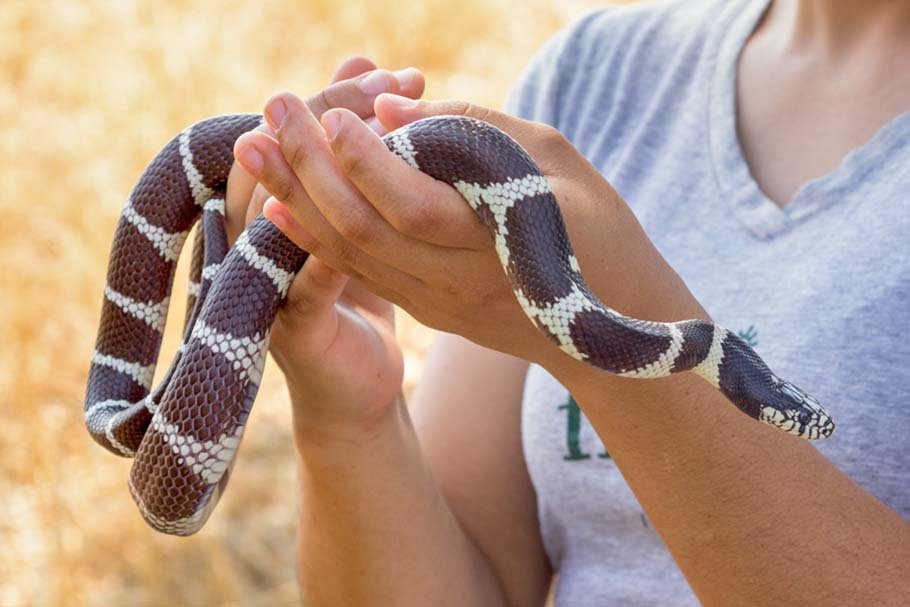
Image from: https://www.cabidigitallibrary.org/
California Kingsnake Food and Diet?
California Kingsnakes are carnivorous and primarily feed on small rodents, birds, lizards, and other snakes in the wild. In captivity, they thrive on a diet of appropriately sized mice or rats, either live or pre-killed. It’s safer and more humane to offer frozen-thawed prey, which reduces the risk of injury to the snake.
Young snakes should be fed once every 5–7 days, while adults can eat every 10–14 days. The prey size should match the thickest part of the snake’s body. Always check for quality, ensuring frozen food is properly stored and thawed. If feeding live prey, supervise closely to prevent injuries.
Special treats like quail eggs can occasionally be offered but should not replace their regular diet. Avoid overfeeding, as obesity is a common issue in pet snakes. Provide clean, chlorine-free water in a shallow dish, refreshing it daily.
If your snake stops eating, reduce stress by covering their enclosure and ensuring optimal temperatures. Reassess their health, and consult a vet if the problem persists.
Advertisement
California Kingsnake Habitat Setup Guide
A juvenile California Kingsnake can thrive in a 10–20-gallon tank, but adults require a 40-gallon enclosure or larger. Choose a secure terrarium from reputable brands like Exo Terra or Zoo Med, available online.
Substrate options include aspen shavings, cypress mulch, or reptile-safe paper bedding. Avoid cedar or pine, as their oils can harm your snake. Provide hiding spots at both ends of the enclosure, along with branches or artificial plants for climbing. A basking area with temperatures between 85–90°F and a cooler side around 75–80°F are essential. Use thermostatically controlled heat mats or ceramic heat emitters for consistent temperatures.
Maintain humidity levels at 40–60%, using a hygrometer for accuracy. Adding a shallow water dish serves as a soaking area, aiding hydration and shedding. Clean the habitat weekly, removing waste and refreshing the substrate monthly.
Secure the enclosure with a locking lid, as Kingsnakes are notorious escape artists. Enrichment like climbing structures and tunnels helps keep them active and stimulated. While recreating their wild habitat indoors is possible, simplicity often ensures better maintenance and safety.
Breeding pairs can cohabitate temporarily during the breeding season, but monitor closely to avoid aggression. A partitioned habitat is ideal for long-term housing of multiple snakes.
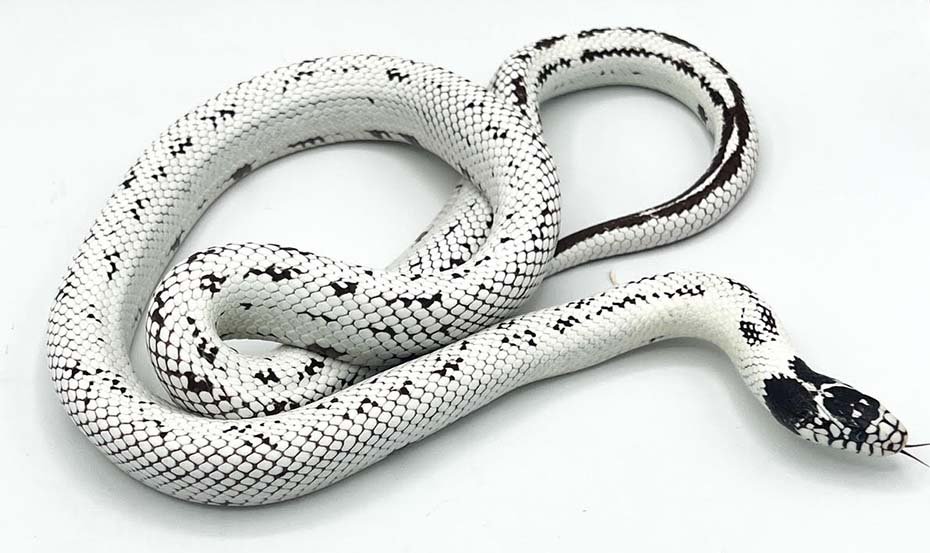
Image from: https://strictlyreptiles.tv/
Are California Kingsnakes Good as Pets?
California Kingsnakes are highly regarded as beginner-friendly reptiles due to their manageable size and hardy nature. They are curious and tolerant of handling once accustomed, though their initial response may include musking or defensive behavior. Captive-bred snakes are generally calmer than their wild-caught counterparts.
While not social, they adapt well to human interaction and can be hand-fed. However, always wash your hands before handling to avoid transferring scents that might trigger a feeding response. Allow them to roam in secure, snake-proof areas under supervision, as they can easily escape or get injured.
Kingsnakes are unsuitable for housing with other species or even other Kingsnakes outside the breeding season due to their cannibalistic tendencies. They do well with children under adult supervision, provided gentle handling is practiced.
Advertisement
How Much does a California Kingsnake Cost?
When choosing a California Kingsnake, prioritize captive-bred specimens for their health and temperament. Look for a snake that is active, alert, and has clear eyes, healthy scales, and a firm body. Red flags include lethargy, stuck sheds, and visible mites or injuries.
Most states in the USA allow California Kingsnakes as pets, but always check local regulations. Some states may require permits. Prices vary from $50–$500, depending on the morph, with rarer morphs being pricier. They are widely available in local pet stores, reptile expos, and online breeders.
Internationally, California Kingsnakes are also available in Canada, Europe, Japan, and other regions, though prices and availability vary. Always ensure the seller provides documentation of captive breeding and health records.





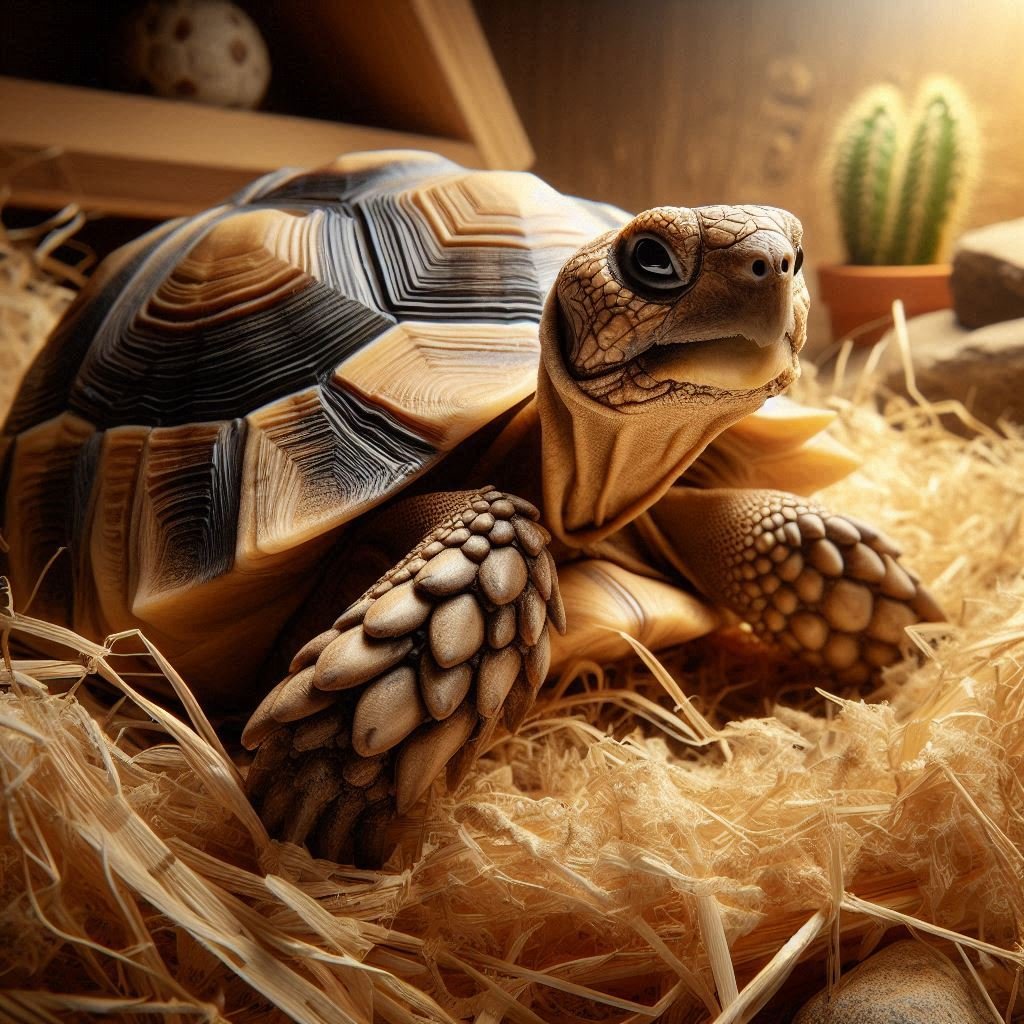


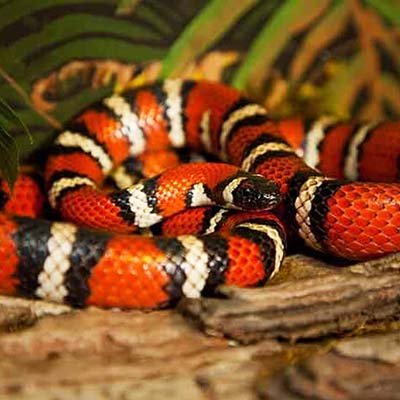
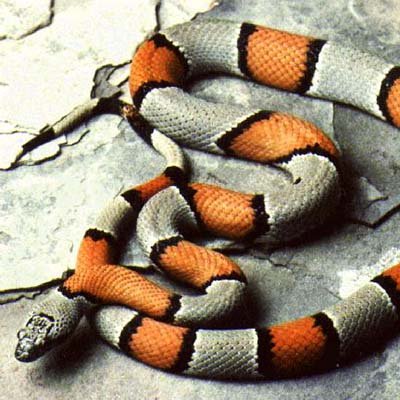


No comments posted yet !